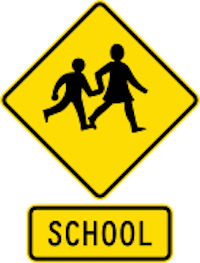Jessica remembers hurrying because she was late for the prayer circle. As she recounts the events of that morning, December 1, 1997, she sketches the path from where she entered the building, to the inside corridor, and then around the corner.
She stops tracing the invisible map on the tabletop before she gets to the lobby.
“I remember saying, ‘Those are gunshots.’”
Josh’s mother was in a rush that day too. She dropped him off at the high school and then planned to deliver his little brother to the middle school, before reporting to her elementary school teaching job. As she was heading off school grounds, Josh passed the prayer circle and hurried to class.
“At first I thought they were firecrackers,” he said. “But then I knew by the panic, the fear on the faces.”
He remembered seeing kids in first-floor classrooms climbing out of windows, and there were other indelible images of carnage.
Josh took off and made it to the other end of the parking lot to discover his mother still had not yet left campus.
“Get in the car,” she said. “Get in the car.”
“I don’t want to leave,” he answered.
Although his mother encouraged him to go home, Josh insisted he was better off staying around his friends.
“We needed to take care of each other,” he said.
Once his mother realized he was safe, the shooting was over, and law enforcement had taken control, she let Josh stay. He is still grateful she understood.
Inside the school, students were shuffled into two locations, the gym and the school cafeteria. In the days before almost everyone had cell phones, word still spread fast throughout the community. Parents began showing up, searching for their kids.
Somehow Jessica ended up in a classroom without a teacher. “Nobody came for us,” she remembered. “We were shell-shocked.”
Twenty-four years later, there are times when she still feels that way.
A high school sophomore that day, Jessica Lanier Sager is a teacher now. Committed to public education and the well-being of her students, she describes herself today as always aware.

“I always have an exit strategy,” she admits.
She has been through active shooter training multiple times. “They fire blanks,” she said. “That is traumatizing to me. Almost twenty-five years and nothing has changed.”
Josh Morehead, a senior in 1997, recalled precise details. “The gun sound, people’s faces. All of it is so vivid. The trauma is long-lasting.”
Marshall County High School’s shootings in 2018 and the rampage in Michigan horrified both Jessica and Josh. Memories of Paducah’s Heath High School shootings came back in a torrent.
“It’s a strange, sad club to be in,” Jessica remarked. ”A web of trauma.”
When the news from Michigan hit, Josh got in touch with a former classmate. “I reached out to Kelly Carneal to say, ‘You’re a victim too.’ I told her I loved her and sent her a big hug. I adore her and her family.”
Kelly Carneal is the sister of Michael, the fourteen-year-old who killed Kayce Steger, Nicole Hadley, and Jessica James, and also fired the shot that paralyzed Missy Jenkins from the chest down.
When asked how to make sense of such tragedies, Josh said, “It’s hard to have hope when it keeps happening. You’re put back in the moment.”
Solutions are proposed but not implemented. As she considers the options, Jessica finally suggests that adequate funding of public education, including better mental health services, would make sense.
“Schools are a social safety net,” she said. “They provide shelter, food, everything.”
Besides things like school shootings, and the extra, non-instructional responsibilities that have been thrust on schools, Jessica is not surprised that teachers are leaving the profession.
“Teachers are first responders but people don’t think about that. They are supposed to lock the door, hide, and fight off attackers.”
She stops to muse a bit before she adds, “They have to come through me first.”

















